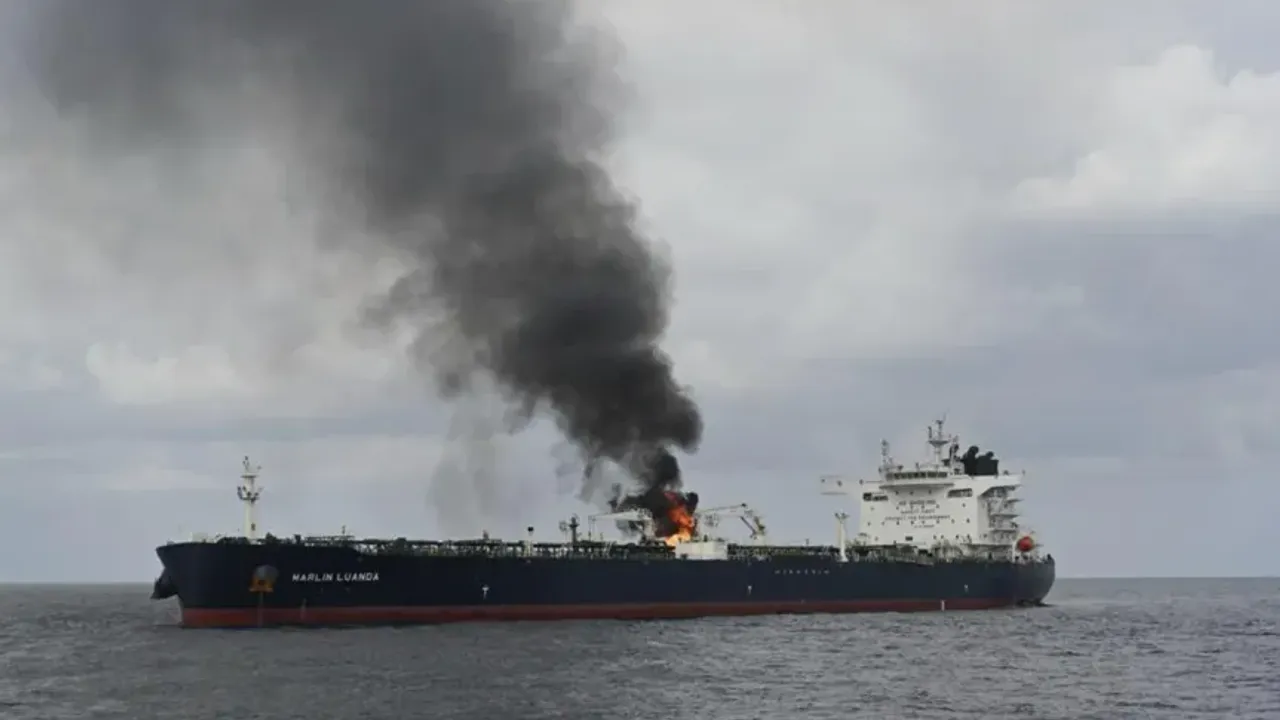Their influence in northern Yemen has strengthened, gaining support from local tribes and political groups with anti-Israel views. This growth has raised concerns about Yemen’s internal stability and the broader regional security environment.
A Rising Military Power in the Red Sea
The Houthis have bolstered their military capabilities with support from Iran, acquiring advanced missile and drone technology. Their arsenal now includes the Hatem-2 missile, the Asif anti-ship missile, and Iranian-made drones, allowing them to strike distant targets, including Israel, US and UK warships, and key maritime trade routes in the Red Sea and Gulf of Aden. Their military strategy has evolved beyond traditional guerrilla tactics, now resembling those of other Iranian-backed proxies, like Hezbollah and Hamas. This evolution includes swarm drone warfare, precision-guided missile strikes, and electronic warfare aimed at disrupting air and missile defense systems. They have also developed sophisticated deployment tactics, including mobile launch platforms, coastal zones, and deeply concealed underground storage.
Since November 2023, the Houthis have launched over 100 attacks in the Red Sea, disrupting commercial shipping and global supply chains. Their campaign not only showcases their strength on the world stage but also boosts their legitimacy at home by positioning them as protectors of Palestine and Yemen’s sovereignty.
Despite consistent airstrikes by the US and UK targeting their stockpiles, the Houthis have proven resilient. Their ability to hide military assets across civilian infrastructure and remote sites makes it hard for Western interventions to deliver decisive results. Their continued reliance on asymmetric warfare, paired with ongoing Iranian support, ensures they remain a capable force. The Houthis have also strengthened their naval capabilities, deploying unmanned explosive boats and sea mines to threaten regional shipping lanes and naval operations.
Part of Iran's ‘Axis of Resistance’
The Houthis' ideological alignment with Iran, Hezbollah, and Hamas—known as the "Axis of Resistance"—has solidified their position in the region. Their anti-Israel and anti-American rhetoric resonates with many in Yemen, where there is widespread resentment against Western involvement. By capitalizing on this sentiment, they have further entrenched themselves as defenders of Yemen’s sovereignty and the broader Arab cause.
Their involvement in the Israel-Hamas conflict has won them increased domestic support, positioning them as active participants in the resistance against perceived Western and Israeli aggression. This narrative has helped them tighten their grip on northern Yemen, marginalizing rivals and dissenting factions.
Israeli airstrikes against Houthi positions have only strengthened their nationalist appeal, casting them as direct opponents of Israel and key players in the Middle East’s broader conflicts. These strikes have provided more opportunities for the Houthis to rally support and recruit fighters. Meanwhile, the Internationally Recognized Government (IRG) in Yemen remains fragmented and unable to mount effective resistance, leaving the country vulnerable to further Houthi influence.
The Southern Transitional Council (STC) controlling parts of southern Yemen has struggled to coordinate with other anti-Houthi factions, making the government prone to collapse. This disunity offers the Houthis the chance to expand southward, targeting key cities like Marib and Taiz. If successful, this expansion could give the Houthis control over Yemen’s vital energy resources, solidifying their dominance and increasing their leverage in future peace talks.
Resilience Amid Western Retaliation
Houthi attacks on Red Sea shipping lanes have escalated tensions and provoked military and economic responses from the US and its allies. Initially, the Houthis targeted Israeli-linked vessels, but their increasingly indiscriminate attacks on commercial ships have exacerbated regional instability. By threatening critical maritime trade routes, the Houthis have prompted multinational naval patrols aimed at protecting shipping lanes. However, these efforts have not completely neutralized the threat.
Western responses have been primarily defensive, with limited offensive actions against Houthi-controlled areas. While airstrikes have targeted missile sites and radar systems, they have not significantly weakened the Houthis’ military capabilities. The group has demonstrated resilience, frequently relocating assets and using decentralized command structures to continue operations despite external pressure. Iranian support has been crucial in refining Houthi tactics and strategies.
Looking Ahead
The Houthis are likely to continue their Red Sea campaign and occasional strikes on Israel, particularly if the situation in Gaza remains unresolved. Their ability to maintain internal unity, despite historical divisions, positions them as a dominant force in Yemen. Saudi Arabia’s reluctance to re-engage in large-scale military intervention further strengthens the Houthis’ position, making southern Yemen a plausible target for their expansion.
However, this expansion could provoke risks. A deeper push into southern Yemen could draw in regional powers like the UAE, whose interests lie in securing maritime trade routes and controlling Yemen’s ports. A successful Houthi expansion could also create security vacuums, providing opportunities for groups like Al-Qaeda and ISIS to exploit the instability.
Moreover, a sustained Houthi campaign against commercial and military targets in the region might compel international players to escalate their military engagement. This could shift the conflict dynamics and strain diplomatic efforts to stabilize Yemen, potentially exacerbating the country’s descent into prolonged warfare and economic collapse.
Alternatively, Western powers may opt for non-military approaches, such as diplomatic pressure or economic sanctions, to stabilize trade without deepening direct involvement in the conflict. However, a stronger military response could provoke further instability and risk antagonizing Iran, leaving countries like the US and the UK hesitant to engage directly. This scenario could lead to a reliance on regional actors like Saudi Arabia and the UAE to lead the charge.





